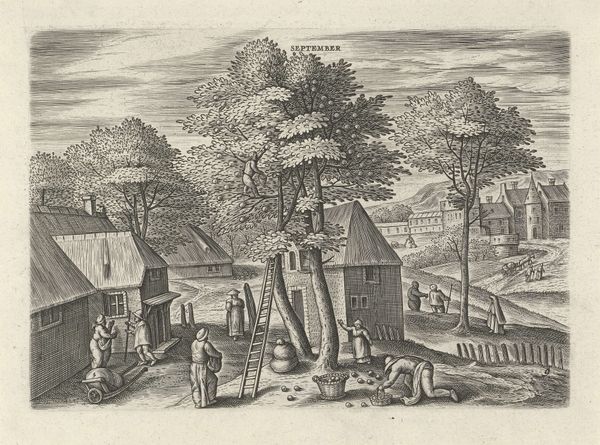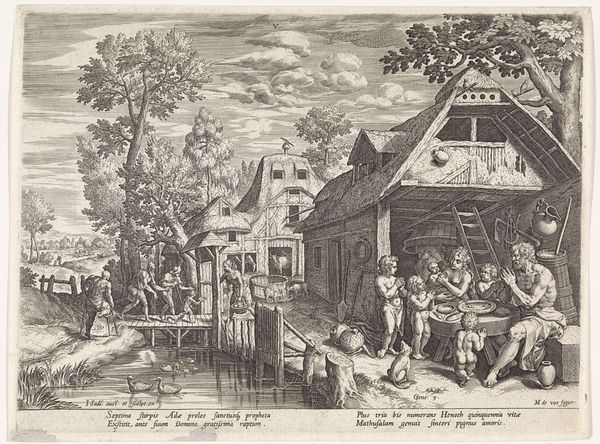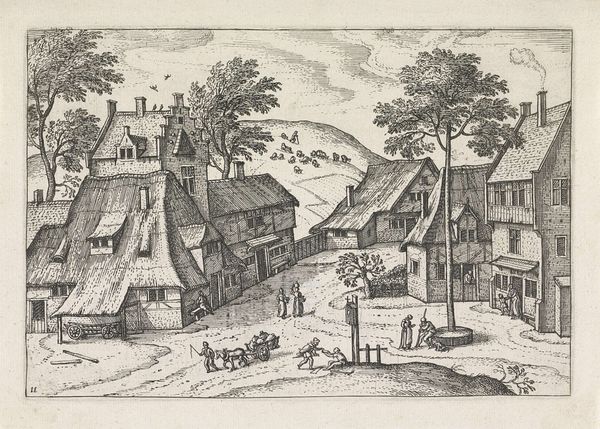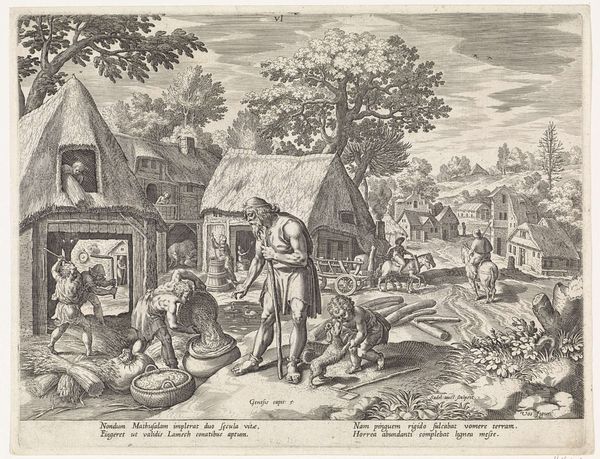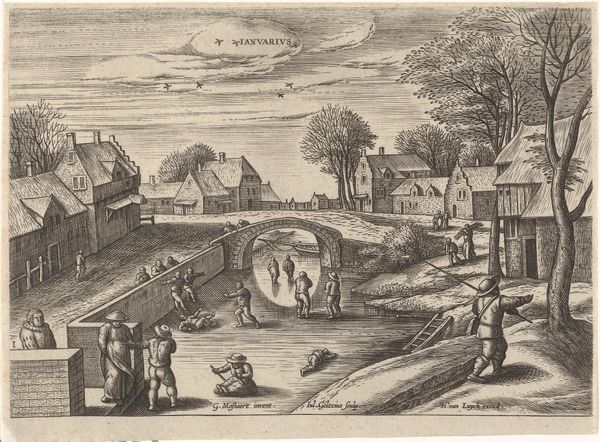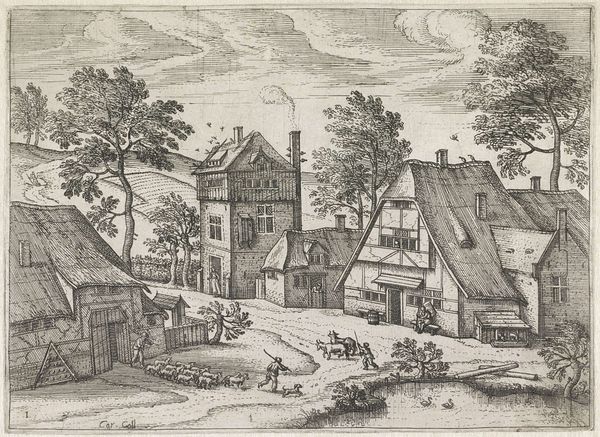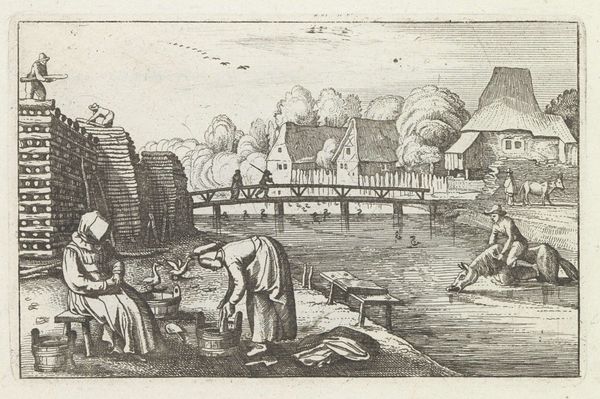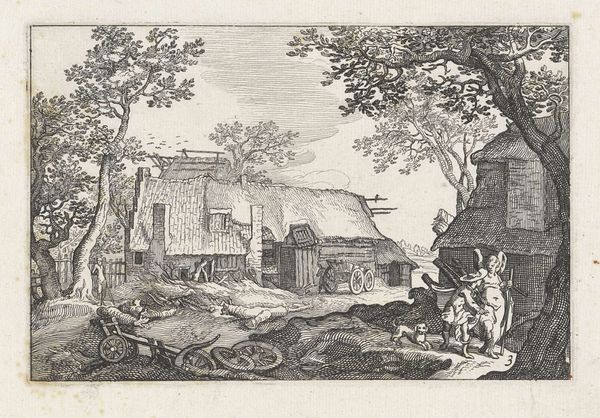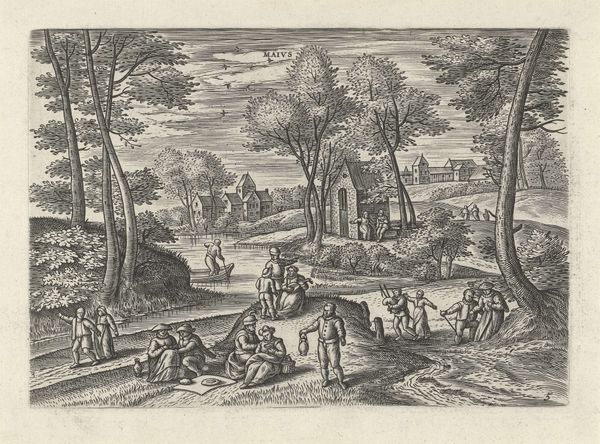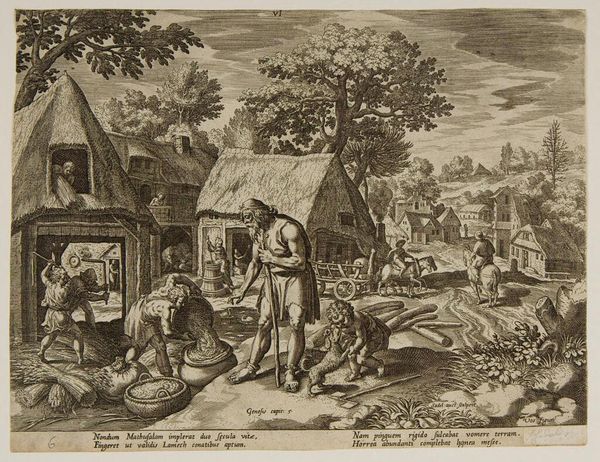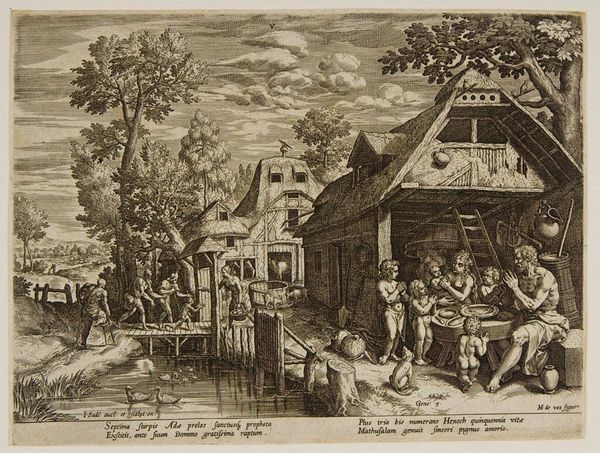
print, engraving
#
medieval
# print
#
landscape
#
line
#
genre-painting
#
northern-renaissance
#
engraving
#
realism
Dimensions: width 168 mm, height 118 mm
Copyright: Rijks Museum: Open Domain
Curator: Welcome. Before us is “Oktober,” a print made by Julius Goltzius sometime between 1560 and 1595. It currently resides in the Rijksmuseum. Editor: My first impression is how serene the scene is, even though it's brimming with activity. The artist manages to create such a peaceful, rustic atmosphere, even in monochrome. Curator: Indeed. Goltzius expertly uses line to define form and texture. Notice how varied the hatching and cross-hatching is; this creates depth and a subtle tonal range despite the work's limited palette. This piece also reveals his ability to organize and formalize everyday settings. The composition, almost rigidly structured, is balanced to achieve symmetry, yet the depiction of reality provides a captivating narrative. Editor: I find this narrative particularly interesting when viewed through a class lens. There's labor here, quite obviously, but it's presented without critique or commentary. The wine-making seems idyllic, which of course obscures the backbreaking nature of the work for many people. Are we romanticizing exploitation through this depiction? I find this ambiguity rather complicated, the figures blend into their surroundings creating a collective almost dreamlike feel to labor. Curator: Your reading certainly complicates a straightforward interpretation, but the linear precision lends the artwork a heightened sense of clarity and order, reflecting the Renaissance humanist pursuit of understanding and codifying the world. The engraving displays remarkable detail in the costumes, the architecture, and even the flight of birds in the sky. Editor: Precisely, but consider who this clarity serves. The art becomes a tool for control, setting an artificial boundary of normalcy, creating division and bias that continues even to today. While you look closely to the engraving technical ingenuity, the class consciousness within asks hard and perhaps inconvenient questions. The engraving presents an interpretation for labor—the beauty or ugliness and its perception of labor and place. Curator: A potent observation! On its own, “Oktober” presents viewers with an example of line art as technical mastery and artistic order. Editor: But considered within its context, it encourages crucial dialogues about power, representation, and the persistent relevance of visual rhetoric in shaping social consciousness. It seems rather appropriate this hangs at the Rijksmuseum given its legacy, though many forget art does not offer neutrality.
Comments
No comments
Be the first to comment and join the conversation on the ultimate creative platform.
